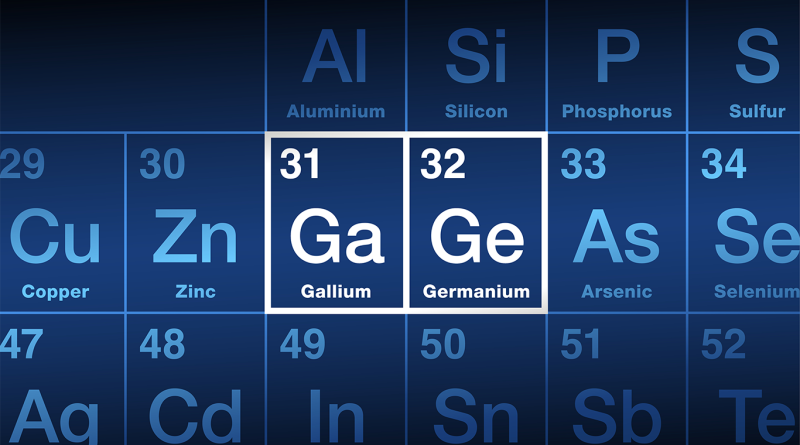Manufacturers Brace for China’s Mineral Export Limits
China’s recent move to impose export controls on two critical minerals, gallium and germanium, has sent shockwaves through the global semiconductor industry. Both minerals are essential components in the production of semiconductors, which power everything from smartphones to advanced military systems. With China accounting for around 80% of global gallium production and 60% of germanium, the new restrictions could significantly disrupt global supply chains, exacerbating existing shortages and creating new geopolitical tensions. This article explores the implications of China’s export controls on these minerals, the potential impact on the semiconductor industry, and how companies and governments are preparing to mitigate the fallout.
Understanding China’s Export Controls on Gallium and Germanium
China announced new export controls on gallium and germanium, requiring exporters to obtain special licenses from the Ministry of Commerce before shipping these materials abroad. The controls are seen as a strategic move in response to ongoing geopolitical tensions, particularly the tech rivalry with the United States. Both gallium and germanium are critical for manufacturing semiconductors, which are used in various high-performance applications, including telecommunications, military hardware, and consumer electronics.
Gallium is a key component in gallium nitride (GaN) semiconductors, known for their efficiency and high-frequency performance, making them vital in 5G technology and radar systems. Germanium, meanwhile, is used in high-speed transistors, fiber-optic systems, and infrared optics. China’s new restrictions have the potential to disrupt the supply chains for these technologies, creating significant uncertainty for manufacturers worldwide.
China’s dominance in these minerals is due to its control over the raw materials and its ability to process them at a lower cost than competitors. This new export policy is not just an economic measure but a strategic one, highlighting the nation’s leverage over global tech supply chains. With these controls in place, companies relying on these materials may face delays, increased costs, and potential shortages.
Immediate and Long-Term Impacts on the Semiconductor Industry
The semiconductor industry, already reeling from a two-year global chip shortage, could be further destabilized by these new restrictions. In the short term, companies like Intel, TSMC, and Samsung are likely to experience supply chain disruptions as they scramble to secure alternative sources of gallium and germanium. Stockpiling is a common short-term response, with some firms increasing their reserves to hedge against potential shortages.
However, the long-term outlook is more complex. The restrictions could force companies to seek alternative suppliers outside of China. Countries like Canada, Germany, and Kazakhstan are potential sources, but developing these supply chains could take years and require significant investment. Additionally, the restrictions may drive up the prices of semiconductors and related components, affecting everything from consumer electronics to automotive manufacturing.
Governments are also taking action. The United States and the European Union are exploring strategies to reduce dependency on Chinese minerals, including recycling initiatives, strategic mineral stockpiles, and fostering local mining and processing capabilities. Yet, these efforts will take time, and the semiconductor industry may have to navigate a prolonged period of uncertainty and volatility.
Geopolitical Ramifications and the US-China Tech Rivalry
China’s decision to restrict exports of gallium and germanium is not happening in isolation; it is part of a broader geopolitical strategy. The move is widely perceived as a countermeasure against US-led efforts to curb China’s access to advanced semiconductor technologies. The United States, in particular, has implemented a series of export controls aimed at limiting China’s ability to develop cutting-edge semiconductors and artificial intelligence capabilities.
These restrictions by China could escalate the ongoing tech war, leading to further retaliatory measures by the US and its allies. For instance, the United States may impose additional export controls on other critical technologies or materials, potentially intensifying the standoff. Moreover, this situation could prompt affected countries to form new alliances or strengthen existing ones to secure supply chains for critical minerals and technologies.
The geopolitical implications extend beyond just the US and China. Countries like Japan, South Korea, and those in the European Union are heavily invested in the semiconductor industry and may also be impacted by the restrictions. The global tech ecosystem, which relies heavily on a free flow of materials and components, could face significant disruptions, prompting a reevaluation of existing supply chains and production strategies.
As the semiconductor industry grapples with the potential fallout from China’s export controls, several mitigation strategies are emerging. One key approach is to diversify sources of gallium and germanium. Companies are exploring partnerships with suppliers in countries like Kazakhstan and Germany, which have significant reserves of these minerals. However, these alternatives may not fully replace Chinese supply in the near term due to production capacity constraints and the time required to establish new supply chains.
Recycling and reusing existing stocks of these minerals are gaining attention as viable strategies to reduce dependency on new extractions. Innovative recycling technologies are being developed to recover gallium and germanium from electronic waste, which could provide a partial solution to the supply challenge.
Governments are also taking proactive steps. The US and EU are working on creating strategic mineral reserves to guard against future disruptions. These reserves, combined with efforts to boost local production capabilities, could help stabilize supply chains in the long term. Nevertheless, the effectiveness of these strategies remains to be seen, as they require considerable time, investment, and international coordination.
Sources:
- Data Center Dynamics Article on Gallium and Germanium Controls
- Additional research from recent geopolitical and tech news articles.
